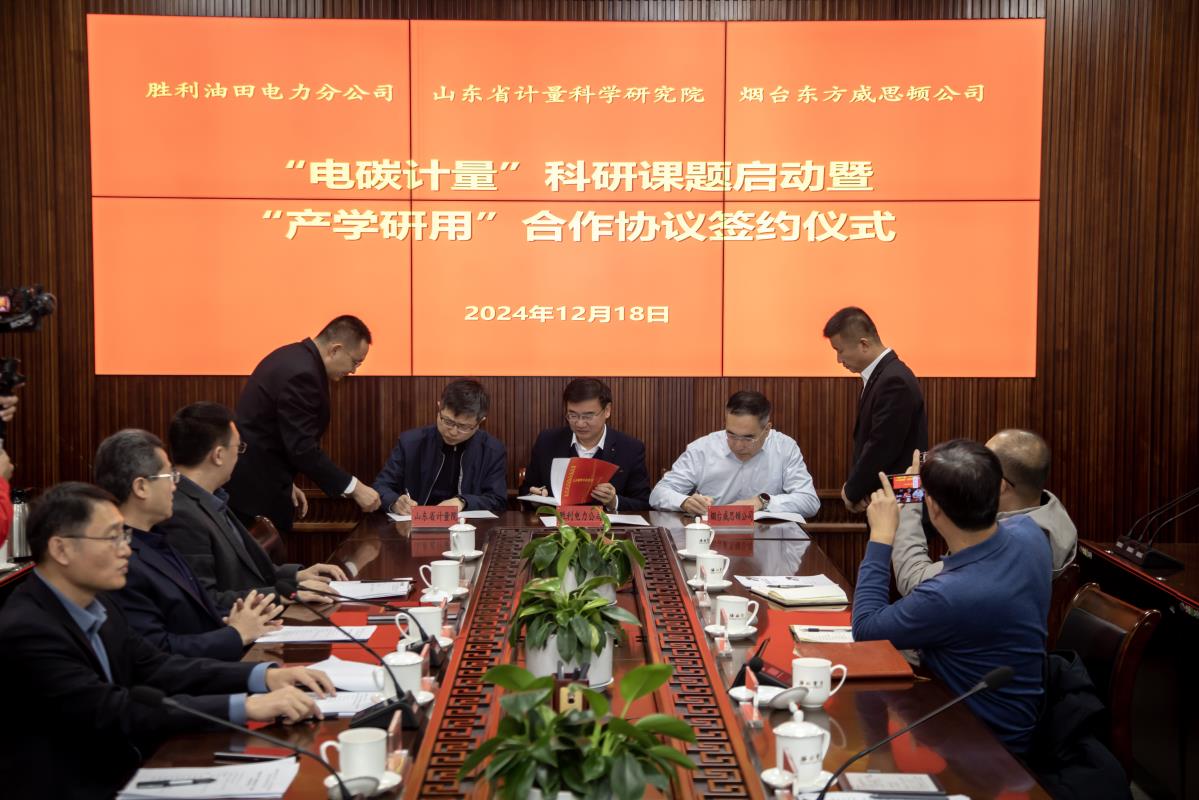Shengli Oilfield, December 18 – To advance energy transition, foster green and low-carbon development, and build digitalized, intelligent new quality productivity under China’s national "Dual Carbon" goals and the new power system framework, Shengli Oilfield Power Branch, Shandong Institute of Metrology, and Yantai Dongfang Wisdom Electric Co., Ltd. jointly held the launch ceremony for the "Electric-Carbon Metrology" research initiative and signed a collaborative agreement. The partnership aims to improve the carbon emission accounting system for oilfield power systems and strengthen joint R&D in next-generation power technologies.

Ceremony Highlights
Presided by Mr. Zhang Hongwei, Party Secretary of Shengli Oilfield Power Branch:
"Today’s agreement marks a solid step toward deep integration of industry, academia, research, and application. It holds practical significance for cultivating new energy productivity and supporting Shandong Province’s green, low-carbon development pilot zone."
Speech by Mr. Liu Yulin, General Manager of Shengli Oilfield Power Branch:
"This collaboration leverages complementary strengths through joint R&D and technological breakthroughs, charting a blueprint for green transformation in the oil and gas energy sector."
Remarks by Mr. Li Wenqiang, Deputy Party Secretary of Shandong Institute of Metrology:
Highlighting the institute’s research capabilities and laboratory resources, he pledged to accelerate the commercialization and promotion of scientific achievements alongside Shengli Oilfield and Wisdom.
Statement by Mr. Xie Jianguo, General Manager of Wisdom:
Expressing gratitude for long-term trust and support, Mr. Xie outlined Wisdom’s advancements in carbon metrology and renewable energy applications. He emphasized leveraging the partnership to drive innovation in "oil-gas exploration and new power system integration."
Collaboration Focus
Electric-Carbon Metrology: Develop precision tools for tracking energy consumption and carbon emissions in oilfield power systems.
New Power System R&D: Optimize grid resilience and renewable energy integration (e.g., solar, wind).
Standardization: Establish industry benchmarks for dual-carbon compliance and smart grid interoperability.